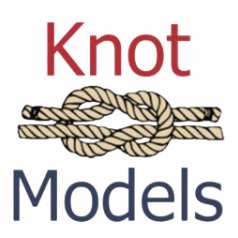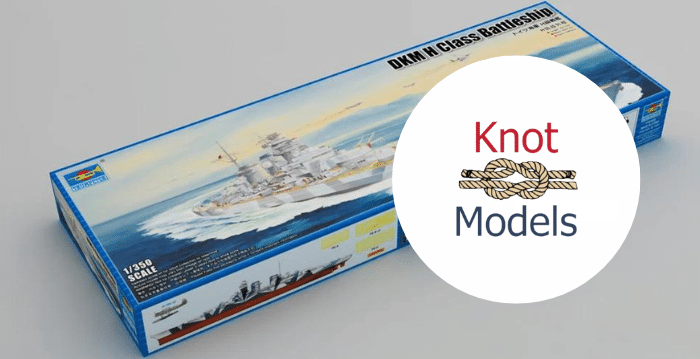
How Knot Models scaled to 400 orders per day with Linnworks
New commerce connects
Find out how Linnworks can help grow your business.

When a business is forced to adapt quickly, the right tools can make all the difference. That’s exactly what happened for toys and hobby models retailer, Knot Models. COVID-19 forced them to rethink their entire fulfillment process — and Linnworks delivered.
We spoke with Chris Decker, Founder of Knot Models, to find out how they transitioned to a hybrid model of Fulfilled by Amazon (FBA) and Fulfilled by Merchant (FBM) and the crucial role Linnworks played in helping them manage a growing inventory and streamline their operations.
The challenge: from Amazon vendor to direct-to-consumer
“We’ve been in business for six years as an Amazon vendor, 100% FBA,” Chris explains. “COVID hit, and we sell toys, hobby models, arts and crafts supplies — all non-essential items. So, Amazon stopped fulfilling them. Since they don’t pay you until they ship the order, we had no cash flow. We were sitting on thousands of orders, but they weren’t being shipped.”
With cash flow stalled, Chris had to act quickly. “We had to pivot and start shipping directly to customers. It was meant to be a stopgap, but we found that it opened up new opportunities,” he says. “We discovered a whole different product profile that was more profitable to sell directly to consumers.”
The search for a better inventory management system
As the business expanded its FBM operations, managing their growing inventory became a significant challenge. “We grew to several thousand SKUs in our warehouse,” Chris recalls. “I needed a better inventory management system.”
Chris’s first attempt to solve the problem didn’t go as planned. “I hooked up with another company — I won’t mention the name because it didn’t go well. They recommended a competing product. During the implementation, there was a billing issue. Our credit card didn’t work, so they turned everything off.” He continues, “I came in on Monday morning and everything was shut down. I was like, ‘This is designed to be the cornerstone of our inventory management system and you guys just turned it off for a glitch?’ They said, ‘Yep, that’s our policy.’ So, I said, ‘Goodbye.’”
That’s when Chris found Linnworks.
Implementing Linnworks: fast and flexible
“On Friday, I called Linnworks, and by Monday I had signed the contract,” Chris says. “What we primarily use Linnworks for is inventory management. It maintains our stock levels with Amazon and feeds into our multi-channel system, Channel Advisor, which we’re using to manage Amazon and eBay.”
The integration with Linnworks has not only helped Chris manage his inventory but also optimize his purchasing decisions. “I use the sales reports for purchasing and the replenishment reports,” he explains. “The big thing is adding products. With Linnworks, I can bring in new lines, track what’s selling, and reorder smarter.”
“What we primarily use Linnworks for is inventory management. It maintains our stock levels with Amazon and feeds into our multi-channel system, Channel Advisor, which we’re using to manage Amazon and eBay.”
The impact: improving accuracy and efficiency
For Chris, one of the biggest improvements has been in reducing order errors, a problem that had plagued his growing operation. “Our biggest challenge is error rates on our orders. Our SKUs are so similar — we sell spray paint, for example, and it’ll be cherry red versus Ferrari red. They just see red spray paint and grab the wrong one,” Chris says. “We’re at the point where I think the only way to make improvements is to introduce a computer for quality control. Linnworks has the tools we need to do that.”
Linnworks has also streamlined the training process for new employees. “With Linnworks, everything is in locations. It really helps when they can’t find something to just type in a location and narrow it down. For new hires, it would take weeks or months to learn the warehouse layout. Now, with Linnworks, they can start picking on day one.”
Preparing for future growth
As Chris looks to the future, his goal is to continue scaling the business. “We’re doing 300 to 400 orders a day, and we’ve grown to 3,000 to 4,000 SKUs. The next goal is to grow to 10,000 SKUs,” he says. “The main constraint we’re looking at is physical space. Our current warehouse might not be able to handle that volume, but I know Linnworks can scale with us.”
“We’re doing 300 to 400 orders a day, and we’ve grown to 3,000 to 4,000 SKUs. The next goal is to grow to 10,000 SKUs.”
In the meantime, Chris and his team are focused on making their current operations as efficient as possible. “Linnworks has the capability to implement a more efficient process like wave picking. We haven’t had the time to do it yet, but once we do, I think it’ll solve a lot of our challenges,” he says. “I know it’s going to take some time to get used to the new process, but I’m confident it’ll help us grow.”
With Linnworks as a partner, Chris is optimistic about the future. “We’ve already seen so many benefits from using Linnworks, from better inventory management to fewer errors and faster training for new employees. I’m excited to see how it continues to help us scale.”